Cobina Wright Sr.: I Hate Society Parties But I Throw Great Ones
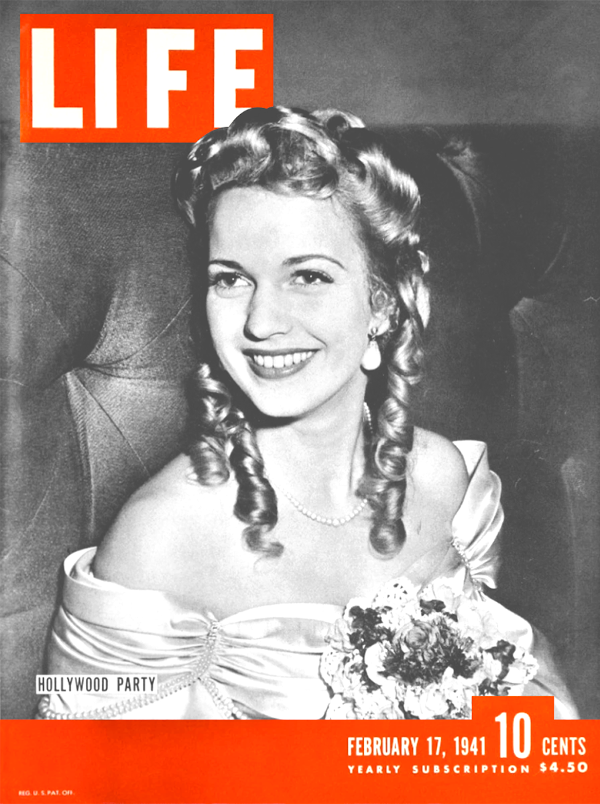
I have had at my disposal a vast fortune. Society, in the popular sense of the word -- I almost said tabloid -- knew me as one of its two leading hostesses; Social Registerite, and all that. I have been married, and that union was blessed with a darling child, my daughter. Cobina, Junior. Singing on both the operatic and concert stages I have known, with all their sweets and their heartaches; and I have sung to many radio audiences as featured artist.
In talking to the ambitious, talented girls I meet in radio circles, I find that all of them are keen to arrive at one, or perhaps at two, of the pinnacles I have known. All of them place professional achievement first, and most of them wish to have husband and child. Society -- at least one of those other distinctions -- as well. I want only one! And the distinction I wish to lose as rapidly and as completely as possible is all that's included in that term "Society"!
To be or not to be a Society woman -- that is the question that has haunted me persistently for lo this many a year. You would think that the Depression which swept away my fortune would have solved the problem for me automatically. But if that didn't do it, you surely would think that being dropped from the Social Register (I suppose because I work), besides a divorce, would settle the matter finally.
However, many of my society friends have shown that they possess a quality that the world in general gives them little credit for ... the quality of loyalty. They are the real aristocrats who have proven that it is I, Cobina Wright, that they sought -- and not my parties at Sutton Place and Sands Point. This has been an enormous comfort to me, and yet it leaves me with the same old problem on my hands: How to prevent my being "in Society" from overshadowing my career as an artist.
Because it may, I choose to get out of Society. And there you have it!
Although I have been a professional singer since I was 16 years old, I am better known as a hostess, both socially and for charity affairs. However, I must say that I do not feel slighted artistically.
I have known the great satisfaction that every singer feels as the result of favorable comment from the critics. In this country from coast to coast, as well as in Europe, such men as W. J. Henderson, Herman Devries and Walter Damrosch, to name only a few, have said very kind things about me in the press, for both my opera and concert work. And yet my name is better known as the promoter of Society Circus Balls, and for having entertained in my homes such figures as David Lloyd George, Lord Arthur Balfour, Theodore Roosevelt, Lord Robert Cecil, General John J. Pershing, Bernard Baruch, Arturo Toscanini, Fritz Kreisler, Jascha Heifetz, Noel Coward, Beatrice Lillie, Fanny Brice and scores of others, whose names are family bywords.
Naturally, I had more fun personally at the smaller parties. At the larger affairs my time was spent chiefly in seeing that things went off smoothly, and that everyone was having a good time.
One party that I gave in my apartment on Sutton Place I remember as a distinctly enjoyable one. Among those present were Feodor Chaliapin, George Gershwin, Charlie Chaplin, James Cromwell (recently married to Doris Duke), William Rhinelander Stewart, Paul Kochanski, the late Ralph Barton, Prince Christopher of Greece, Mary Hoyt Wiborg, Mrs. Kochanski and Germaine Taillefere. Immediately after dinner Kochanski sent for his violin. Accompanied by Pierre Luboschutz, he played divinely. Chaliapin, who was in rare good spirits, became inspired, and he strode up and down the room singing from Boris Godunov. Then Charlie Chaplin ordered buns from the kitchen and performed his famous stunt with them. Leaping for the piano, George Gershwin played for him ... the party lasted until the wee small hours and Gloria Morgan Vanderbilt declared that she never had stayed up so late without noticing it.
At that time the late Mrs. Benjamin Guiness and I were considered the only ones in New York who held salons which included both artistic and social lights. However, all this entertaining never detracted from my artistic desires. Possibly it seemed so to many, but I worked just as hard at my singing when I was mistress of a vast fortune, as I do now. I would have strived even harder then had I not considered that my first duty was to my husband and to my child.
Later on, when my daughter was no longer a baby, I had a very important decision to make. Two offers came to me at the same time, both of them very attractive. One was from the late Otto Kann and Giulio Gatti-Casazza to sing with the Metropolitan Opera Company; the other from Arthur Honegger to tour the United States, interpreting his songs with symphony orchestras, with him at the piano.
It took me three days and a long discussion with Otto Kahn, who was a real friend and, I believe, a great admirer of my work, before I decided to go with Arthur Honegger. The roles which I wanted most, such as Tbais and Mehsamle, already had been contracted by the Metropolitan, so it seemed that the tour would mean more to me artistically. It proved a grand success, but I often wonder now if I had accepted the Metropolitan offer, would it not have helped me a great deal in my present radio work on Cobina Wright's Party, airing on CBS stations.
I know I have made many mistakes in my life. But I thank fortune that I am still a young woman with strength and vitality and a very optimistic outlook. I still hope to accomplish many fine and artistic things in my field. I live for my daughter, whom I work to educate and support. She is the greatest thing in my life, and I desire more than anything else in the world to have her proud of me always. She has given me the courage to strive hard in the face of adversity. I am trying to raise her to love people as I do, and to get a real joy out of everything she does. If I can achieve that, the change in our financial circumstances certainly will become of negligible importance.
For the immediate present I aim at making my radio programs better and better each week. I want to put into them more and more of what I have learned in the past, and to have each program teach me new things for the next one. I feel certain that if I can do this, that reputation of mine as a Society hostess will sink gradually into an obscure place in my life, and that a reputation as a hostess on the air will take its place. These are the things I hope to do.
Cobina Wright Sr. in Radio Guide, May 25, 1935
Alka-Seltzer Brings Lum and Abner Back to Radio
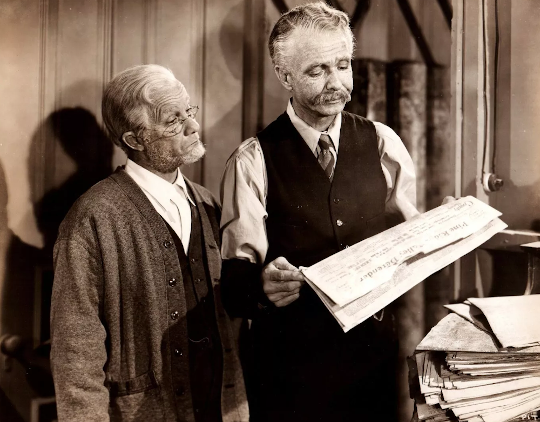
A new radio contract recently made will bring Lum and Abner back on the air again. This is expected to happen this present month of May. The pair of Arkansas-born entertainers who made Pine Ridge a nationally known postal station and changed a name from a myth to a reality are reported to have accepted a contract with the makers of Alka-Seltzer.
Details of the new deal in broadcasting Lum and Abner 's humorous philosophy are lacking, but a long distance conversation had one recent night between Chester H. "Lum" Lauck and his father W. J. Lauck Sr. revealed the famous pair of entertainers were getting ready to face microphones soon.
Talking from Lexington, Kentucky, where he and other racing friends had gone to witness the Derby, "Chet" informed his dad it was expected a west coast broadcast would be made first. Later in the year after the heated season was nearing its end, a regular network would be broadcasting the new Lum and Abner programs.
What system would be used wasn't indicated, the Mena recipient of this latest news from radioland explained, nor were other details made clear. But the Mena entertainers are coming back to the air and the beloved voices of Lum and his boyhood pal Abner will be heard again by the thousands of loyal fans they've made throughout the nation because of their clean and interesting program.
From the Mena Star, May 15, 1941
Comedian Arnold Stang Makes a Spectacle of Himself
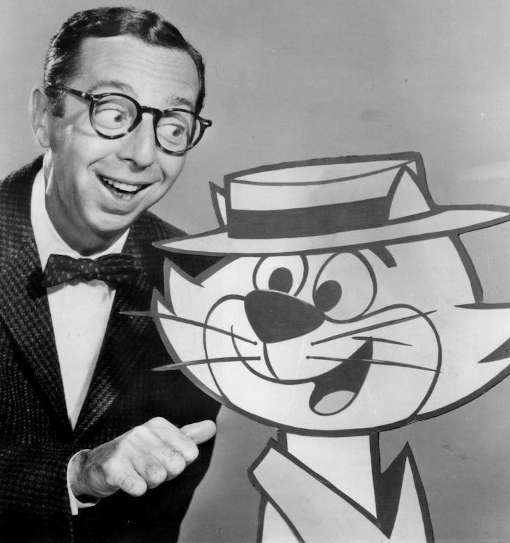
So what's to get excited about Arnold Stang? To paraphrase the irrepressible Gerard of the Henry Morgan Show, what's not to get excited?
After all, people constantly are getting excited over the Boston kid who parlayed a feigned Brooklyn accent and a boyhood penchant for comedy into a modest fortune and a bright future that has a long time to burn before reaching peak incandescence. During the past 10 of his 24 years, the anemic looking New England comedian's earnings for milquetoasting on radio and screen narration on Warner-Pathe newsreels have snowballed into a quarter of a million dollars.
Stang answers all fan mail personally. Some fans he keeps. Those are the ones who do not ask for money. He gets lots of letters from incredulous listeners who ask, "Do you look as funny as you sound?" Stang is cagey. He sends a picture of himself, with the note. "Judge for yourself."
Many ask how to break into radio. Apparently, Stang is not appalled by thought of competition. He warns these hopefuls to steer clear of dramatic schools, and advises them to get experience at local radio stations and in little theater groups. Stang got his own early training by playing bench warmer on the Corsairs Athletic and Social Club baseball team in Chelsea. Since, to put it in Stang's own deathless prose, he was "a lousy ballplayer," he had to do something to gain the respect of his fellow Corsairs. So he took to memorizing comedy routines he heard on the radio and regaling the team with his wit.
"It worked out great," Stang recalls. "They could play ball better than I. I could tell jokes better than they."
Stang's humor has improved, and his audiences have multiplied through the years. He owns one of the funniest and most ubiquitous voices on the air. He is perhaps best known and most deservedly celebrated as the hyper-suspicious, delightfully cynical, albeit meek Gerard on the Henry Morgan Show.
His radio performances are legion and legend. His querulous, high-pitched tones have been enlisted by the greatest funnymen of the kilocycles to keep their followers laughing. Some who answer to this roll call, in addition to Morgan, are Fred Allen, Jack Benny, Ed (Archie) Gardner, Alan Young, Milton Berle, Judy Canova, Groucho Marx, Eddie Cantor, Abbott and Costello, Bob Hope, Al Jolson, Frank Fay, Kay Kyser and William Bendix.
Shortly before comedian Jack Paar's half hour on ABC was canceled. he wooed Stang with a $1,000 a week offer to appear on his show for a few minutes each Wednesday night to give it a sorely needed shot in the Hooper. "If I have to mortgage myself, I'll pay you what you want," Paar pleaded.
Stang was flattered, but the offer did not pierce his fidelity to boss Henry Morgan, whose show then rode the same network the same evening at a time when Paar was being ballyhooed as another Morgan -- and Morgan was privately chafing at the similarity between Paar originality and old Morgan scripts.
There's been a steady clamor from Stang addicts for a show of his own. The temptations have been great, but Stang has cautiously resisted rushing in prematurely. He's rejected 30 different program ideas. At one time eight comedy shows were being dangled before him simultaneously, and all he did was shake his rabbit-like head and shrug, "So what's to rush?"
"My own show would need good writing, strong support and a certain warmth," Stang told us some time ago. "I would never try to carry a program by myself. I want a situation comedy, not a gag deal."
Apparently, Stang has finally found what he wants for he is even now busy preparing his "dream show," while continuing his appearances on the Milton Berle and Henry Morgan shows. Another Stang venture will be a lead comedy role in a Broadway musical this season.
Hollywood -- which has had Stang and wants more -- is crazy for him, but he keeps turning down fat paying movie roles because he does not deem them suitable to his personality. He insists upon reading the script before accepting a part. If he had an agent, the agent would need an agent to deal with him.
While Stang was in Hollywood last year with the Henry Morgan show, Eddie Cantor signed him as a supporting comedian. Stang drew a bumper crop of laughs, but he was called on to play a different character each week. Dissatisfied, Stang asked and received from Cantor an "amicable" release. Stang issued a statement: "Due to inability to fulfill a contractual obligation to develop an identifiable character, I have parted company vith Eddie Cantor."
Not only because of contractual ties, but because of warm personal regard, the Boston kid isn't likely to walk out on Henry Morgan. "Henry is one of the most intelligent people I know," Stang avers. "I am most grateful to Henry because he has raised the standard of radio a great deal. He has made sophistication stylish in radio. He has stimulated many others to raise their standards."
Stang was torn almost limb from limb by the three top comedians -- Morgan, Berle and Cantor -- who wanted him on their programs while he was in Hollywood. "It almost killed me," he gasps at the recollection.
His schedule called for appearances on the Eddie Cantor preview in Hollywood on Monday, on the east and west coast editions of the Milton Berle show in New York on Tuesday, on the Henry Morgan show in Hollywood on Wednesday, and on the Eddie Cantor show in Hollywood on Thursday. Midnight Monday, he boarded a plane to New York. In Gotham, he remained long enough to play Berle's psycho-neurotic son on the east coast broadcast and the west coast repeat. With the studio audience still applauding, he raced back to La Guardia Field and hopped a plane that got him to Hollywood late Wednesday afternoon, just in time to answer his cue on the Morgan show.
After three sleepless days, he managed on one instance to induce some shuteye on the flight back to Hollywood. He was asleep 10 minutes when the hostess shook him awake. "Are you really Gerard on the Henry Morgan show?" she wanted to know. From there in, further slumber was out of the question.
Two weeks of that grueling timetable was enough for Stang. Berle had to find himself a less neurotic neurotic. Stang's reluctance to appear in just any movie stems from his burning desire to become the Harold Lloyd both of talking pictures and radio. He has the looks, the ability, the point of view -- and the eyeglasses.
Stang's hobby is collecting lens-less eyeglasses. His collection of more than 100, gathered from the far and far-sighted corners of the myopic world, probably is one of the greatest extant, barring those of optometrists. Stang always is in the market for new additions. Friends dig up odd looking glasses for him. Stang spots specimens himself in pawnshop windows, then bangs the lenses out of them.
His most unusual is a pair of small, round Mother Hubbard spectacles he bought in Boston. His favorite possession is the pair of frames Harold Lloyd wore in the silent films. Lloyd gave them to Stang while producing Seven Days Leave. Stang's ambition is to acquire a pair of Bobby Clark's glasses.
His (Stang's) habit is to keep the cheaters he wears in every picture and play in which he acts. He tags them and tenderly stores them in a drawer. They have become Stang's trademark, along with his never-absent bowtie. He will not perform without them. This caused an impasse when Stang co-starred in the Broadway revival of Sailor Beware in 1943. Stang insisted upon wearing spectacles in the show, and producer Arthur Beckhardt was dead set against the idea.
"Who ever heard of a sailor wearing glasses?" Beckhardt groaned.
The dickering -- and bickering -- continued. Meantime Stang did a benefit at the Brooklyn Navy Yard. At supper, he wrung from the commanding officer an admission that in his outfit there were no less than 30 gobs who wore glasses. The C.O. obligingly gave Stang a note to that effect, and in the face of this evidence, Beckhardt capitulated.
Stang executes his bowtie-and-glasses identity even to the caricature on his letterheads and envelopes. He never has appeared without them, except once when as a joke he wore a long tie for a day. "Nobody noticed it," he confesses.
Among the films in which Stang has garnered additions for his glassless eyeglass collection have been My Sister Eileen, with Rosalind Russell; They Got Me Covered, with Bob Hope and Dorothy Lamour; Let's Go Steady, with Skinnay Ennis; Hepcats, with Bob Crosby, and Seven Days Leave, in which he was the featured comedian sharing billing with Victor Mature. On the set the two were known as "Mature and Immature."
Stang has been in the boy wonder business a long time. He left Chelsea at 12 when a postcard request won him a New York City radio audition. He used as fare the money he had saved for his mother's wedding anniversary present. Two weeks after the bespectacled urchin stormed Gotham, he was commanding fat checks on The Children's Hour. His mother found the belated gift worth waiting for.
Stang has been in radio ever since. He did not take time out even during school days. He was admitted into Townsend Harris High School in New York, an institution reserved for students with the capacity to absorb four years learning in two or three. Stang eschewed all school dramatics. He was too busy acting for cash on the radio. His extracurricular endeavors had a marked effect on his studies. At the age of 14, Stang won a gold medal for attaining the highest scholastic average in the city.
Stang attributes his proficiency as a laugh-getter to the fact that he approaches comedy as acting, not clowning. For the same reason, he is understandably proud of his little known serious work. He played Spit, the tough young hoodlum in Dead End, on the New York stage and on the air. He portrayed the murderer in radio dramatizations of Ring Lardner's The Haircut twice on the Phillip Morris Playhouse and once on the Great Plays series.
"So what's to be modest?" he asks. "I used to be a pretty darn good actor."
William Tusher in Radio and Television Best, November 1948
Doc Wildeson Leads the Band at Radio Station WLW
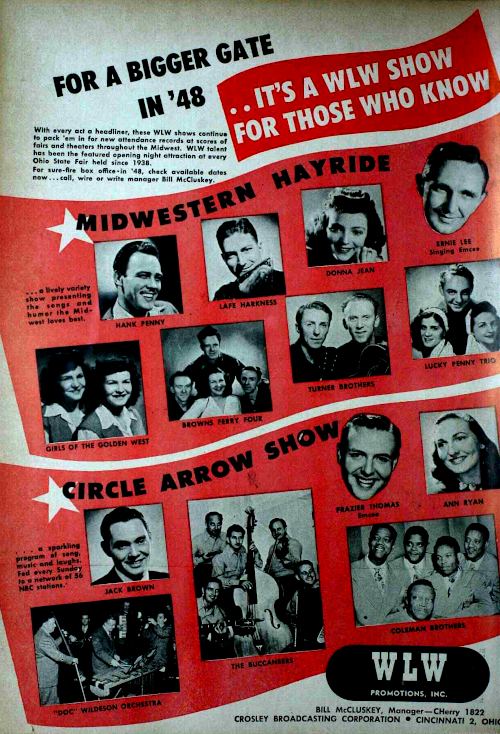
Keith "Doc" Wildeson, WLW orchestra leader, began leading his Wildcats one year after joining the station. That was in 1932.
Wildeson was born and grew up in Pitcairn, Pennsylvania, where he attended high school. It was while in high school that he began playing in an orchestra -- an avocation which developed into a full-time profession. As a young man, not yet out of high school, he entered radio by the back door. He traveled to Pittsburgh each week, playing trumpet with a group of high school musicians on KOKA. They were paid for the half-hour show -- one of the first commercial broadcasts in history.
After leaving high school, Wildeson played with such aggregations as Ted Lewis, Jan Garber and Henry Theis. He came to WLW with Theis in 1932, where he played with the late "Fats" Waller and was featured on the trumpet when The Red Skelton Show originated at WLW. His Wildcats furnished the musical background recently for Ernie Lee recordings by Victor.
Wildeson and his band are heard on Sunnyside Review, Morning Matinee and The Ernie Lee Show. Wildeson's Wildcats, a small group of musicians specializing in sweet and swing music, had gained attention in the WLW area through frequent night club and theater engagements.
For recreation, Wildeson chooses bowling, golfing, hunting and fishing. Travel is pretty well out as a hobby because the musician has toured every major city in the United States since entering professional music at the age of 17.
Wildeson's ambition is to be a top-flight conductor, a goal he is not too far from realizing. With this in mind, he has resumed music studies at Cincinnati's College of Music.
Success seems to run in the family. Wildeson's teen-aged daughter Kay recently won the junior tennis title for girls in Cincinnati. Not only is she an accomplished tennis player, but young Kay is following closely in the footsteps of her father. She spends several hours each day practicing on a newly purchased piano while papa Doc watches and teaches.
The popular musician, a very handsome fellow to say the least, left high school early. It was in Pitcairn that he met the woman he was to some day marry -- Theadora Cutshall.
When Wildeson first came to WLW he listed one of his greatest pleasures in radio as, "a relaxed show with kidding continuity." He has that show now, five days weekly, with Ernie Lee, ballad singer, starring in the vocal role.
From Radio Mirror, February 1948
My Mother Was Rosemary LaPlanche, Film Star and Beauty Queen
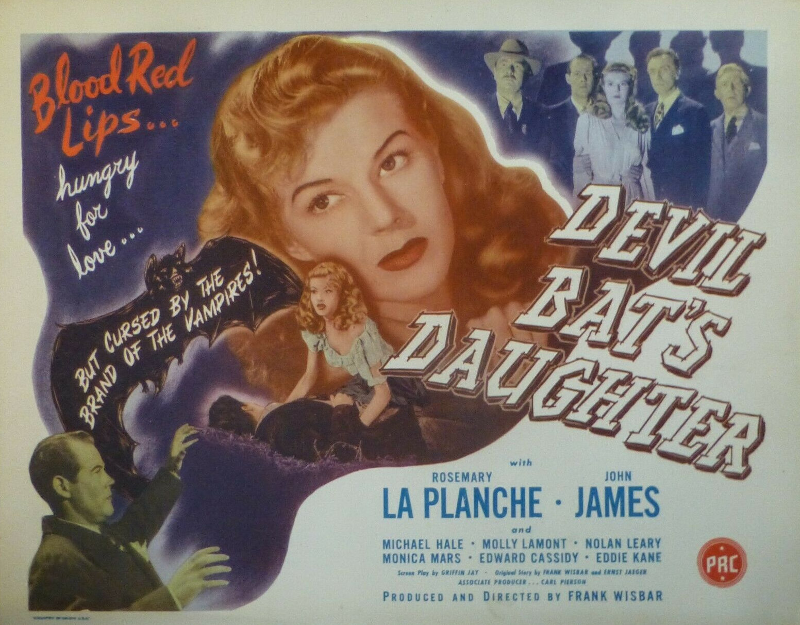
Many of you remember Rosemary LaPlanche by her title, Miss America 1941, representing the state of California. Others may know her as RKO star and cast member of the Lum and Abner movie Two Weeks to Live. However, I knew her best because Rosemary was my mother.
Rosemary was born to Charles and Anna LaPlanche in Glendale, California, on October 11, 1923. She had a big sister, Louise, who was four years older. It was a family in every sense of the word. Charles worked for the telephone company, and Anna took care of the girls while "Charlie" was at work. Both Rosemary and Louise loved to entertain and would go out in their backyard and put on dance shows for neighbors, or just for their own entertainment. On weekends, the LaPlanche family would walk for miles, each family member eating from a gallon carton of ice cream while walking to the one movie theater in town. It was something they loved doing together and always looked forward to seeing the Hollywood movies.
Louise, Rosemary's sister, began acting at age three when she appeared as the child Esmerelda in the silent film classic The Hunchback of Notre Dame, starring Lon Chaney. Both girls showed both beauty and talent. It was just a fun day in the life of the LaPlanche girls to take dance lessons and perform in their backyard. They were not pushed into the entertainment field, they just loved performing and couldn't get enough of it.
Louise and Rosemary attended Marshall High School. Both entered beauty contests for fun. Rosemary's sister Louise was Miss Catalina 1939 and Miss North America. Rosemary started entering the local beauty contests in 1940 at the age of 16, while still in high school. Entering and winning all the contests leading up to the Miss America pageant in 1940, she became Miss California and represented California in the Miss America Pageant. Many people do not know that in 1940 Rosemary and the contestant from Pennsylvania tied for the title. The judges were asked to vote several times to break the tie. They were still tied after many hours. The news headlines were printed in California saying that "Miss California Wins!" Still, with no decision, another judge from Pennsylvania was brought in to break the tie. Of course, he placed his vote for Miss Pennsylvania and Rosemary became the first runner-up. It was quite a scandal and controversial.
Rosemary was told if she could win the American Legion Contests leading up to the Miss America Pageant for the following year, she could be included in the pageant again. Rosemary couldn't wait for the opportunity, and won every one of the pageants including Miss California 1941. She was proud to represent her native state a second time and went on to win Miss America 1941 at the age of 17. To this day, she is one of the most beautiful and popular Miss Americas of all time. After being in the pageant twice, pageant rules were changed to say that no contestant may appear in the Miss America pageant more than once.
While in high school, Rosemary appeared in her first movie, Mad About Music, with Deanna Durbin. As I was growing up, I remember mom singing the song called "I Love to Whistle" from that movie to me.
After graduating high school and holding the Miss America title, Rosemary represented the United States as it went to war in December 1941. Naturally, Rosemary became a centerfold in many of our servicemen's lockers and she received fan mail and marriage proposals! During that time, mom went on a coast-to-coast train tour selling war bonds. The Hollywood War Bond Cavalcade included over 20 major celebrities, including Fred Astaire, Ginger Rogers, James Cagney, Greer Garson, Mickey Rooney and Judy Garland ... and of course, Rosemary LaPlanche. Following her time spent representing the United States as Miss America, she was invited to spend time with President and Mrs. Eleanor Roosevelt on their private boat on the Potomac River.
Shortly after that, Rosemary was signed to a contract with RKO Radio Pictures, while her sister Louise was signed at MGM. Some of Rosemary's most remembered movies are Strangler of the Swamp, with leading man Blake Edwards; Devil Bat's Daughter, Two Weeks to Live with Lum and Abner, Federal Agents vs. the Underworld (a serial), Jack Armstrong, The All-American Boy (another serial), Prarie Chickens with Noah Beery Jr., Show Business with Eddie Cantor and Betty Co-Ed. Mom told me she made over 50 movies during her RKO years.
In January 1947, Rosemary married the love of her life, my dad, Harry Koplan, a television emcee and radio personality. My dad created and emceed a new television show called You 're Never Too Old, then later both mom and dad emceed The Koplan/LaPlanche Show.
In October 1950, they became the proud parents of Carol Louise (that's me), and two years later in June 1953, Rosemary gave birth to Terry Michael. My brother and I couldn't have asked for a better set of parents. They both were the perfect role models for both of us. I am presently teaching kindergarten in Sherman Oaks, California, and my brother Terry is in the insurance business also in Sherman Oaks. Terry is married to wife Claire and has two sons, Christopher and Michael.
Living in Sherman Oaks, California, since 1955, Rosemary retired from show business, only occasionally filming a television show or a commercial. Rosemary was happy being a full-time wife and mother. And may I add that my mom and dad were the best and loving parents!
During her retirement, Rosemary took up oil painting and became quite recognized for her paintings ... especially her seascapes and desert scenes. She had several one-woman art shows and was awarded Best of Show in a special competition. She sold most of her framed paintings to people who loved her technique and appreciated fine art. In 2000 her sister Louise, who now lives in Ann Arbor, Michigan, donated one of Rosemary's paintings, "Laguna Shores," to the Miss America Organization.
In May 1973 Rosemary became a widow when her husband Harry passed away while they were on a business trip to Gallup, New Mexico. They had been married 26 years, the most wonderful 26 years of mom's life. Then, in May 1979 after a year of suffering with kidney cancer, Rosemary passed away to join her beloved husband Harry.
I remember one day while mom was ill, I came home from school and mom told me she recognized herself on TV in Lum and Abner's Two Weeks to Live. Rosemary only wished she had been able to view the movie from its beginning. She had many fond memories of all her movies, but she spoke frequently of the time she worked with Lum and Abner on Two Weeks to Live. She even gave me a press book from the movie that she had kept, with black and white pictures of the lobby cards and posters, with information about the movie in it. Now that they sell videotapes of old movies, I am proud to own my own copy of the movie. Oh how I wish my mother could have seen it.
Rosemary LaPlanche was not only Miss America 1941 , a beautiful, talented performer, artist, loving wife, and wonderful mother, but she was a gift to everyone's life she touched. I am so very proud of her and am thrilled to have been asked to share just a small part of her life with you.
Carol Koplan in Jot 'Em Down Journal, February 2003
Musicians Elsie Mae and Ralph Waldo Emerson Married on WLS
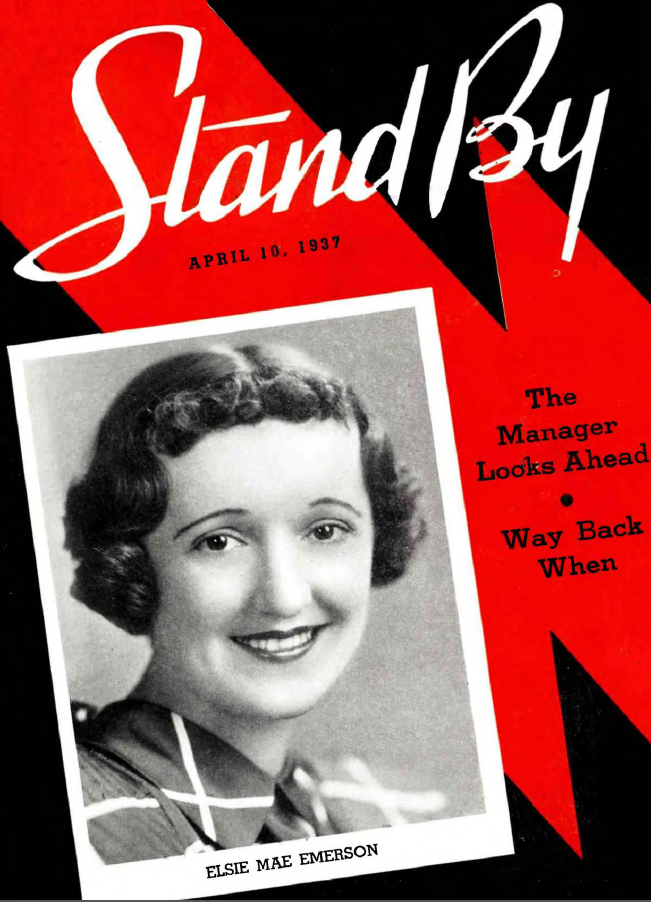
Falling asleep at night to the sweet strains of the popular Swiss instrument, the zither, played by her father and mother, is one of Elsie Mae Emerson's earliest memories as a little girl up in Kaukauna, Wisconsin. She loved it, for like the other seven members of her family, Elsie Mae Look was a born musician.
Every member of the family plays the piano. The guitar, the mandolin, and the violin were also favored instruments in the home. Emerson's mother taught all kinds of stringed instruments.
At the age of three Emerson amazed her family by sitting down to the piano and imitating a tune she had heard one of her elders play. From that time on until she began the study of music at five, she played by ear. She was so gifted and so full of music that her teacher had difficulty getting her attention fixed on the notes, for Emerson thought it was much more fun playing by ear.
During her girlhood days Emerson was identified with everything musical in her home town. She played for all school affairs, dancing classes, glee clubs, the orchestra, musicales and operettas. On Sunday she played for the church and choir. On week nights, she was pianist at the local theater. She studied voice, organ, piano and harmony at the Lawrence Conservatory of Music in Appleton, Wisconsin.
Then Emerson came to Chicago to continue her study of music at the American Conservatory of music and at the Columbia School of music. Later she studied with Ralph Waldo Emerson, the man she was to marry.
Together, Elsie Mae and Ralph came to WLS in 1925 as alternate organists. During the years that have passed, listeners have thrilled to the music of these two artists.
Working together in their mutual interest of music, each realized that they had so much in common that life without the other would not be complete. One of the outstanding events of the station's early days was the wedding of Elsie Mae and Ralph which took place before the microphones in the Sherman Hotel on April 9, 1925.
Two sons have brought added happiness to the Emerson home. Ralph Waldo Emerson Jr. (Skippy) was born on June 5, 1930, and little John Skinner Emerson (Jackie) was born on Halloween 1935.
According to Ralph, Elsie Mae is not only a fine musician but she is a splendid cook. In these modern days of bake shops, Elsie Mae bakes all the bread the family uses.
There is nothing Emerson enjoys as much as going swimming. She loves the great outdoors and though her home is in the heart of a great city, the farther away from civlization she can get, the happier she is.
She stands four feet, 11 1/2 inches and tips the scales at just 100 pounds. She has brown eyes and softly waving auburn hair. She was born in Kaukana, Wisconsin, November 18.
Jack Holden in Stand By, April 10, 1947
Hazel Dopheide's Journey From Chautauqua to Radio
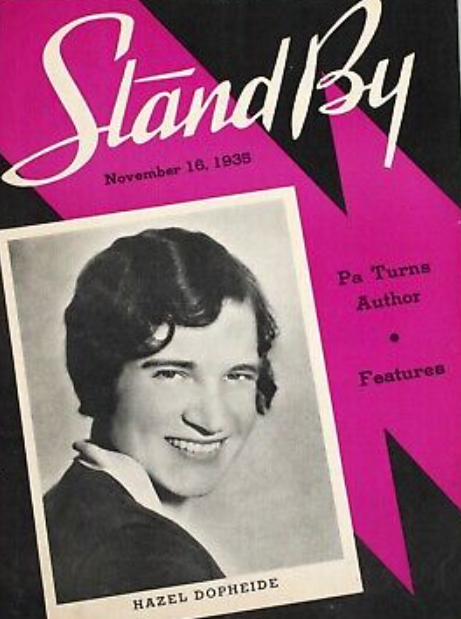
Both the training school and the practical school of experience made Hazel Dopheide the finished actress whom radio listeners know. After graduating from the dramatics department of McKendree College and the School of Speech at Northwestern University, Hazel entered Chautauqua and lyceum work. This was shortly before the rise of radio and Chautauqua was in its heyday.
At 18, Dopheide was billed as the youngest dramatic reader of plays on the lyceum platform. She read the parts of all characters -- men, women and children. Her repertoire included such plays as The World and His Wife, The Money Makers, Mary Magdalene and Friendly Enemies. The last named play Dopheide memorized by attending seven consecutive performances in Chicago.
Dopheide has plenty of memories of long sleeper jumps between towns, of leaky tents -- playing her part while the stage manager held an umbrella over her head -- blazing heat and shivering nights. She knows how it feels to go on when too ill to be safely out of bed, how it feels to lose her voice in the middle of a performance. And she loved every minute of her experience, really.
There were many compensating factors -- travel to strange towns, interesting countryside, amusing incidents of the show and the companionship and friendship of her fellow artists. One night Hazel was playing the piano accompaniment for a tenor solo. A bass singer stood beside her, turned the music, and with a palmetto fan, shooed the mosquitos away from her. Finally one skeeter that Dopheide says must have been the size of a hummingbird landed on her neck. The bass singer couldn't resist. He slapped her neck with a loud resounding crack. He got the mosquito, all right, but he broke up the tenor's solo.
Another time when Dopheide was in the tensest part of a dramatic reading, a half-grown kitten ambled onto the stage. Almost immediately a small dog in the rear of the tent -- "he was waiting for his cue," she says -- rushed happily down the aisle and with loud, ecstatic barks chased the cat from the stage. She had paused for this disturbance, then she picked up her lines and went on.
She enjoyed her association with such stars as Strickland Gillilan, Edmund Vance Cooke, the Rev. S. Parkes Cadman, Madame Schumann-Heink and many others.
Dopheide started in radio at KMOX St. Louis, playing the leads in scores of dramatic productions. One of her most successful was Memories, which ran for two and a half years. At KMOX she also was featured in short stories and plays in which she took all the parts. When she came to Chicago, her first regular work was on WLS in Cradle Dramas. In these she played mother roles and as a result was soon in demand, especially for mother parts. However, she does a wide variety of other parts from ingenues to character.
Her favorite role at present is the feminine lead of Ma and Pa Smithers, even if she does have to "hector" Pa frequently. She conceived and built the idea of House By the Side of the Road in which she and Tony Wons starred on NBC last year. Other shows in which she has appeared include Homemakers' plays, Station E-Z-R-A, Ma Perkins, Little Orphan Annie, Judy and Jane, Romance of Helen Trent, Just Plain Bill, Painted Dreams, Backstage Wife and others.
Dopheide was born in Palmyra, Illinois, on May 12. She's a tall girl, with gray eyes, brown hair and one of the grandest smiles you're apt to encounter.
From Stand By, November 16, 1935
Top 10 Articles
- The Marriage of Don Ameche and Honore Prendergast
- The Night Arthur Godfrey Fired a Singer On Live Radio
- The Earliest Radio Shows of the 1920s
- Abbott and Costello's 1938 Radio Debut on the Kate Smith Hour
- Early Radio Announcers Invented Their Profession in the 1920s
- The Home Life of Jack Benny
- The Mythical Town of East Tincup, Colorado
- How Ed Wynn Spent His $5,000-a-Week Radio Salary
- The Tragic Death of Russ Columbo at Age 26
- Jack Benny Tells on Wife Mary Livingstone

